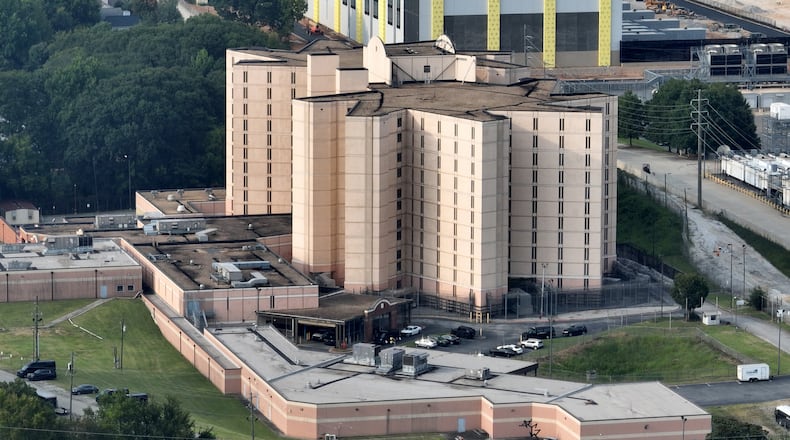Ten people – so far – have died this year while in custody in Fulton County.
We write “so far” for good reason.
That’s because more than 60 inmates have died at jails operated or leased by Fulton County since 2009. It’s a number so unacceptably high that it risks become a ho-hum statistic, even in a state where inmate jail deaths are more common than decency should demand.
That must change.
One prisoner death really is too many. Having none should be the goal of a civilized, humane society, particularly in a city with a human rights legacy like ours.
So many people – most of whom have not been convicted of the charges against them – should not be dying in jail cells, or on gurneys at Grady Memorial Hospital after being rushed there from the jail.
We can do better. Fulton County, especially, must do better.
There should be higher standards and expectations of inmate safety, even in cellblocks teeming with the violent, the mentally ill and people accused of nonviolent, relatively minor offenses who’re only behind bars because they are too poor to pay the smallest of bond amounts for their freedom.
A city with our history deserves better. People of decency should demand better.
And Fulton County’s leaders should make it so.
It’s not as if the problems plaguing Fulton’s infamous Rice Street jail (or the Atlanta City Detention Center, where Fulton leases space for hundreds of county inmates) are somehow obscure. Far from it.
We all know what’s wrong. Our elected leaders especially so.
Fulton County Sheriff Patrick Labat has been blunt in his assessment of the jailhouse failings. “The recent outbreak of violence at the Fulton County Jail is of grave concern but unfortunately is not surprising considering the longstanding, dangerous overcrowding and the crumbling walls of the facility that are literally being crafted into makeshift weapons that inmates use to attack each other and staff,” the sheriff said in a statement quoted last month in an Atlanta Journal-Constitution story. Labat added that, “We have had an unfortunate series of deaths this year that range from natural causes, to preexisting health conditions, to homicide.”
Ten deaths in 9 months lends a bitter understatement to the sheriff’s words. But he deserves credit for plainly saying that there is a big problem with the county’s dangerously dilapidated corrections operation.
Given the terrible death toll behind bars in Fulton, it’s not surprising that the Rice Street Jail is now under review by the U.S. Justice Department.
That’s not a new situation. Decades ago, a federal judge’s action helped speed up construction of the current Rice Street jail. Ironically, the rush was intended to more-quickly fix overcrowding and decrepit conditions at a predecessor lockup.
County officials are now talking about building a next-generation jail. It’s expected to cost about $1.7 billion and wouldn’t accept its first detainees until 2029. The general idea is to construct a facility about four times the size of Rice Street, with capacity for about 4,500 inmates.
Plans also call for the jail to have space and resources for providing better mental health care, education and reentry programs that are inadequate at Rice Street. These initiatives reflect the modern, common-sense thinking in criminal justice reform that it is better to guide people away from a life of crime than to keep building ever-bigger, costly facilities to lock away offenders for long periods. These types of reforms have shown promise in helping lower jail populations and recidivism rates.
The new jail can’t come too soon. Fulton County officials should make it a top priority. Our collective humanity and desire for public safety demands nothing less.
The Editorial Board.
Keep Reading
The Latest
Featured



